This is a free fortnightly newsletter about the New Zealand Net.
If you would like to be notified by email when a new edition is published, please contact ZL1NZ.
Browse our Newsletter Archive and List of Net Tips.
Featured key
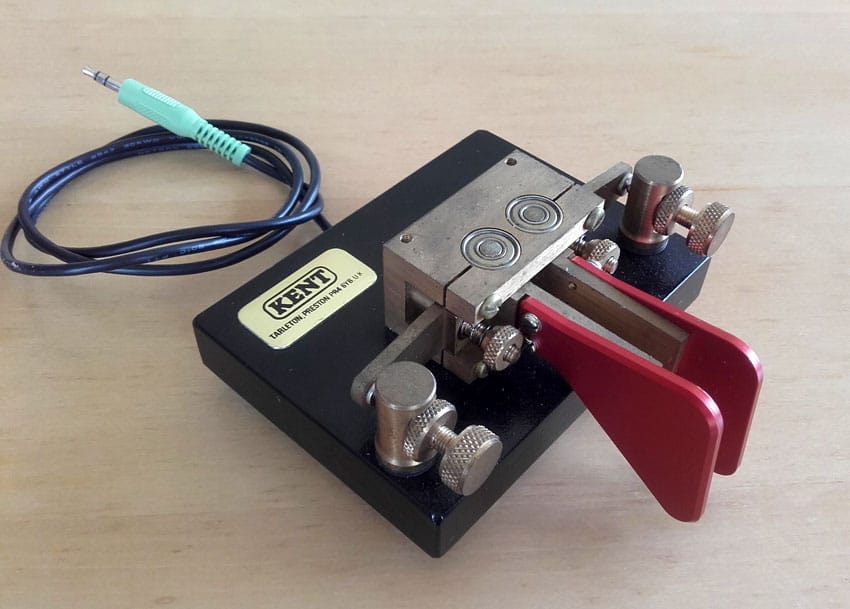
Photo: ZL4KX
By Bede ZL4KX
This is a Kent TP1 dual-lever paddle, made by Kent Engineers.
I bought this key second-hand from the local auction site. It appeared to have never been used, and is an early model where the arm bearings are clamped, rather than pressed into the main block of the key as in the current TP1-B model.
RA Kent Engineers was originally an English company, but Kent Engineers is now located in Germany. This paddle is also available as a kit, which is somewhat unusual in this century. You do get to save €20 though, which would help with shipping costs.
The paddle comes in un-coated brass and will develop a dull finish over time. I won’t change this, as I have seen too many “refurbished” keys which have not turned out well! However if you are skilled at this kind of work, it would preserve the finish better.
There is no vertical slop in the paddles, and the bearings are very smooth. Adjustments are only spring tension and contact gap. The threads on the adjustments are fine enough for precise settings.
I have fitted new finger pieces to this paddle, as the original ones were of a slightly soft plastic. The ones now attached are aluminium and are from BaMaTech. These have made a good key even better and there is no flex in the finger pieces at all. The finish is excellent, and I received great service from Marcus DL6YYM. I would highly recommend these if you have a Kent key.
This is the paddle currently used at my station. Previously I used a Bencher BY1, which in many ways is similar to this paddle.
* If you have an interesting key for this feature, please send a nice clear photo and a few words describing it.
Quick notes
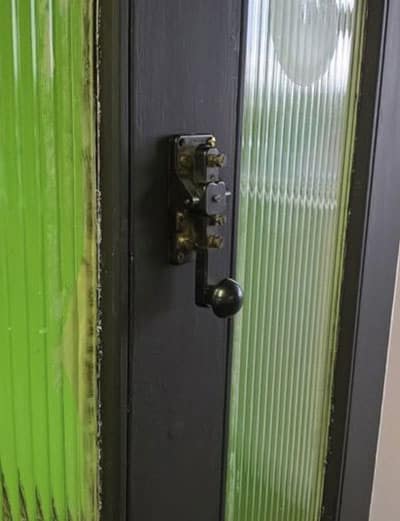 An ingenious new device (pictured) lets you know if the person knocking on your door is a CW operator. Unlike most modern devices, it does not use artificial intelligence or require a Wi-Fi connection, so even the experts are baffled about how it works.
An ingenious new device (pictured) lets you know if the person knocking on your door is a CW operator. Unlike most modern devices, it does not use artificial intelligence or require a Wi-Fi connection, so even the experts are baffled about how it works.
The CW Ops CW Open Contest will be held on Saturday 2 September in three 4-hour sessions, with the first starting at 0000Z.
Wallis & Futuna: Jacky ZL3CW plans to be active from Wallis Island, using the QTH of Jean-Gabriel FW1JG, 20-30 November 20-30. This will be a CW-only operation with focus on the WARC bands.
Chatham Islands: Holger ZL3IO plans to be active from Waitangi, Chatham Islands as ZL7IO 15-28 September. Operation will be on 160-10m CW and other modes.
The mystery receiver pictured in NZ Net News 113 remains unidentified. I thought for sure someone would recognise it, especially as it doesn’t look homebrew. If any branch newsletter editors are reading this, perhaps you could include it in your next newsletter?
Straight Key Monday is sneaking up on us! Yes, our next NZ Net session is Monday 4 September, so it’s time to find your favourite straight key and get ready to join Graeme ZL2TE for some hand-made CW. (Even if you don’t have a straight key, please QNI with whatever key you prefer.)
September is Canadian Straight Key Month (Le mois canadien de la clé droite). Listen for the special callsign VC3K all month. Get details.
Lighthouse Weekend
We have three reports on International Lighthouse Lightship Weekend which was held 19-20 August:
By Graeme ZL2TE at home in New Plymouth
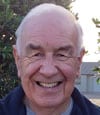 It was like pulling teeth trying to get a CW contact but I finally made it.
It was like pulling teeth trying to get a CW contact but I finally made it.
Things started badly with weeks of anticipation dashed when my XYL, Ngaire ZL2UJT, started to incubate Covid a couple of days before the event. Being a considerate Kiwi, I elected to self-isolate rather than potentially infect what would have become my ex-friends. So, with drooping bottom lip, we stayed home.
Ah well, “not all is lost,” sez I, as I fired up on Saturday to operate as a home station and provide contacts for those braving the inclement weather. My plan was to work as many lighthouses on SSB as I could and ask them if they could change mode to CW.
Great idea, but time after time they ruefully informed me that they had no CW operator. Eventually, on Sunday morning, I heard ZL6CC at Cape Campbell with Bill on the mic. I knew that Bill could operate CW as Grant ZL2GD had told me as much on Saturday evening as he was trying to get his attention with no luck – I hope that you got there in the end Grant.
Anyway… even though I had worked ZL6CC on Saturday I called him and asked if we could do the QSO on CW. Bill found a key and valiantly tried to mate it with the rig but with no luck so he asked me if I was up for a pressel CW QSO, which I eagerly agreed to, and away we successfully went. Finally, I had a CW lighthouse QSO in my log. Bill, I want to know that your CW was impeccable and no one would ever had guessed that you were sending with the PTT on a hand mic. My thanks for the trouble you went to!
The Taranaki crew operated ZL2AB from the Cape lighthouse replica which is an operating lighthouse less than a kilometre from the working one at Cape Egmont. The light can not be shone out to sea, of course, as two lights almost together would be a hazard. The replica came about when the operating lighthouse was being modernised with LED lighting and the lamphouse with its amazing fresnel lens and mechanism was to be scrapped. The community got behind the project and rescued the lamphouse and mechanism, built the lighthouse, and now the equipment is faithfully maintained by Len ZL2OF. Additionally a museum dedicated to Ernest Rutherford, his family and the people who lived and worked in the area at that time has been created in the lighthouse which is open for visitors in the weekends from 10 am until 3 pm. For this year’s ILLW, the weather was low, but the spirits were high and the contacts, particularly on 15 metres were great.
_…_
By Bill ZL3VZ at Cape Campbell ZL6CC
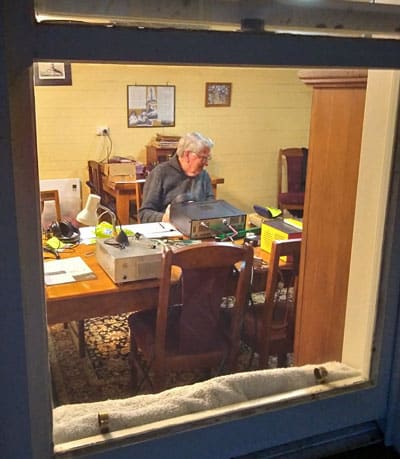 I didn’t expect any lighthouse stations to be on CW so I didn’t bring a key to Cape Campbell lighthouse (ZL6CC). I didn’t think anyone else had either until we were put on the spot by Graeme ZL2TE.
I didn’t expect any lighthouse stations to be on CW so I didn’t bring a key to Cape Campbell lighthouse (ZL6CC). I didn’t think anyone else had either until we were put on the spot by Graeme ZL2TE.
When I asked around in a panic, it turned out that there was a paddle and a straight key in somebody’s luggage. However, to save time I figured we could probably pull it off by putting the IC-7600 on RTTY and keying with the mic pressel switch. It seemed to work OK but was probably fairly hairy fist-work!
There were seven of us at Cape Campbell and we had nearly 120 contacts, mainly SSB but a few FT8 as well. The latter was just an experiment to see if any other lighthouse stations might have given FT8 a go too. It seems they didn’t.
We were using two HF stations, the IC-7600 working into a couple of verticals for 7/21 MHz and 14/28 Mhz at the water’s edge, and an IC-7300 into a multiband windom. Gale force winds overnight on Saturday and again Sunday gave the verticals a hard time but they were still useful for DX, working into Europe and the US.
The old lighthouse keepers quarters are very accommodating and comfortable. Good fun was had by all. If ZL2GVA had been here we probably would have done more CW!
[The photo above shows Bill at ZL6CC, possibly searching for a key? – Ed]
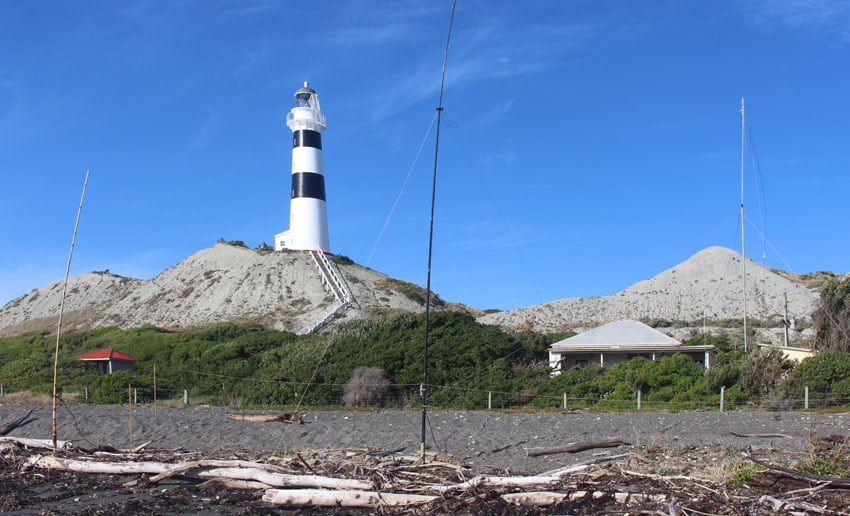
Cape Campbell lighthouse. Photos: ZL2GBX
_…_
By Roy VK6RR at Point Moore WA
Sorry, I didn’t hear a single ZL. I only worked a VK2, 3, 5, 6, 7 and an SP1. But no lighthouses! Was a great weather day though.
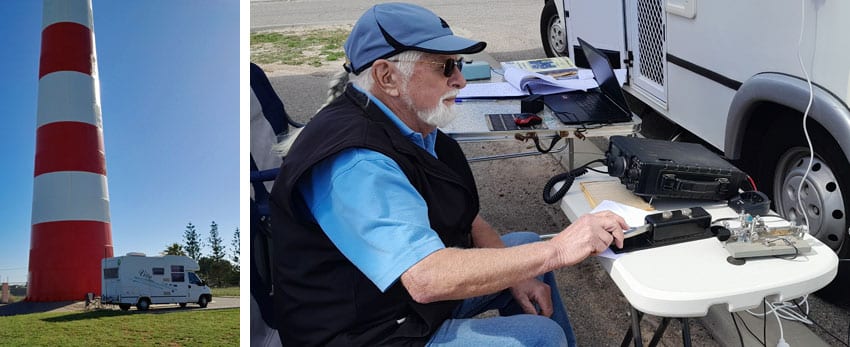
Photos VK6RR
I had a lot of interest at the lighthouse in the morse, people had a go on my key and sounder, took away morse code sheets and asked a lot of questions, which was good. I had such things as the weather forecast for UK waters in CW running on my PC so people could hear morse and see what it like when copied down, again they were very interested. So even if I didn’t make a lighthouse QSO it was a worthwhile exercise!
Photo flashback
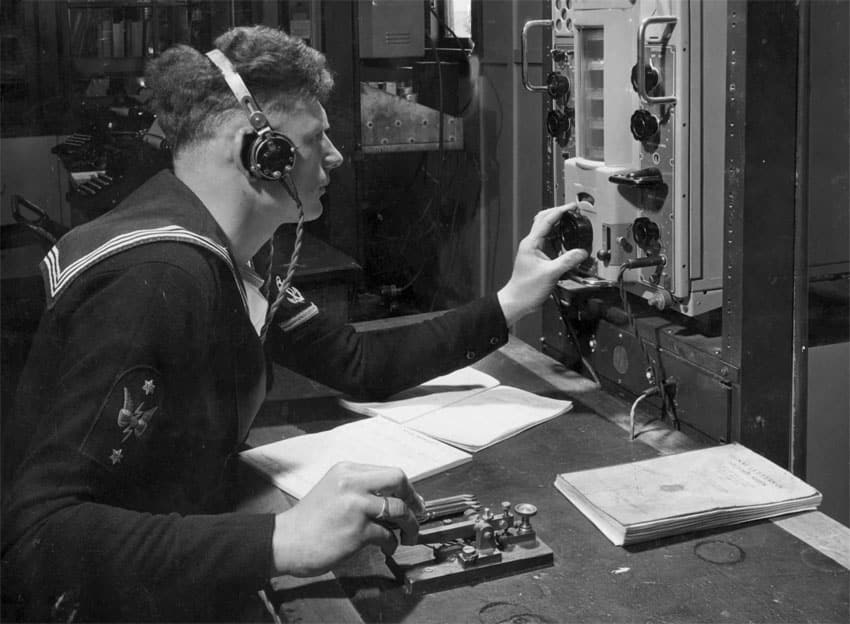
Photo: Torpedo Bay Navy Museum
A radio operator is seen at the naval radio station HMNZS Irirangi, located at Waiouru in the central North Island of New Zealand. The station was established during WW2 with a receiver site covering 100 hectares, and a transmitter site eleven kilometres to the north.
Changes at FISTS Down Under
FISTS Down Under is no longer an incorporated society, having completed the deregistration process in New South Wales. Under its new, less-formal structure, the group will continue to promote the use of CW, including via its website, newsletter and on-air events.
At the AGM on 28 August, only one of the four elected committee members (vice-president Derek VK3KX) stood for re-election. Former president Chris VK3QB, secretary Phil VK3VB and committee member Graeme VK5GG stood down and there were no nominations to fill their positions so they remain vacant.
VK3VB thanked VK3QB for his service. “It is Chris’s enthusiasm (and rigour) that has kept FDU going. As well as being president Chris has redesigned and maintained the website, introduced Discord, stepped in as treasurer, until recently published the magazine, done the hard yards with corporate affairs and FISTs international to simplify FDU.”
Net numbers

Here is the monthly net report as transmitted to all stations on 1 September 2023.
NR60 ZL1NZ 37/34 AUCKLAND 0900Z 1SEP23 = NZ NET = AUGUST QNI VK3DRQ 20 VK4PN 14 ZL1AJY 2 ZL1ANY 14 ZL1NZ 22 ZL1PX 12 ZL1RA 6 ZL2GD 16 ZL2GVA 8 ZL2KE 6 ZL2LN 7 ZL2TE 17 ZL4BDG 15 ZL4KX 16 TOTAL 175 QTC 26 = ZL1NZ
A visit to Samuel Morse’s summer home
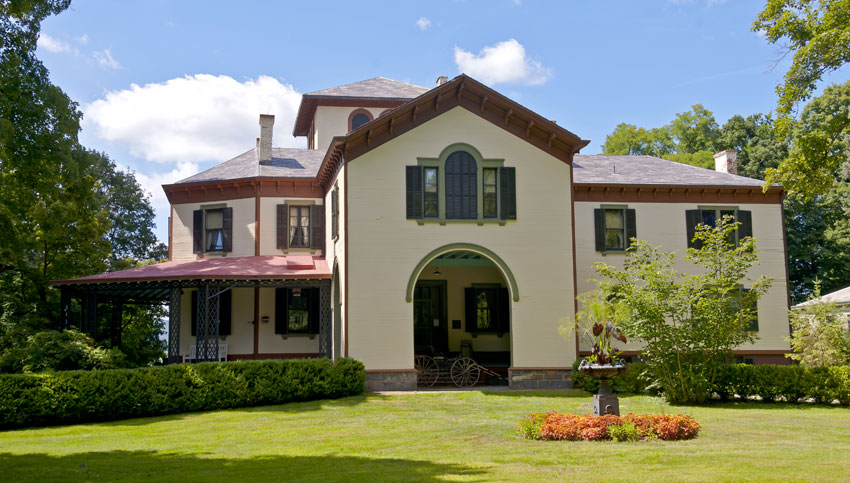
Locust Grove. Photo: Daniel Case, Creative Commons
Samuel FB Morse generally spent summers with his family at their holiday home Locust Grove, in the town of Poughkeepsie, New York.
It wasn’t too much of a hardship, apparently. The home had nine bedrooms and plenty of staff to keep the residents quite comfortable.
Morse challenge
Nothing fancy this time. Just tell me the one-word answer to this question:
Please send your answer to ZL1NZ via radiogram or email.
Answer to previous Morse Challenge
In the recording, the operator at K6KPH was Chris and the signal report I sent him was QRK5 QSA4. Correct answers were received from G4ETQ, ZL1ANY, ZL1AYN, ZL2GVA and ZL4BDG.
Video: Two bugs are twice the fun
Here’s how to reduce wrist fatigue in long ragchewing sessions. Simply alternate between hands. 🙂
The bug on the left is a 2000 Vibroplex Original Standard left-handed model. On the right is a 1978 Vibroplex Original Deluxe right-handed model.
Video courtesy Eric NI4E
Advertising archive
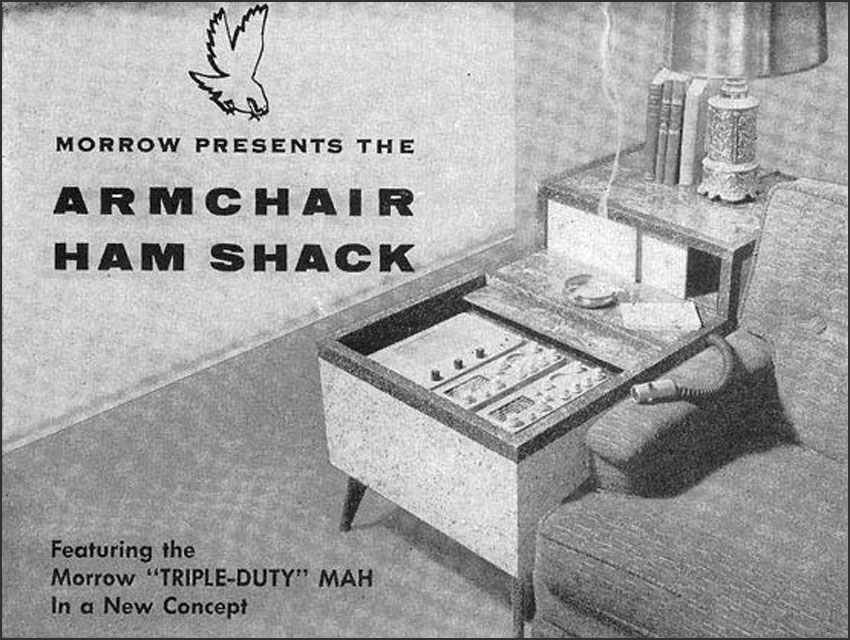
CQ magazine, Oct 1956
Can you imagine how painful it would be to operate this station?! No place for your bug or even a straight key, although there is room for an ash tray. I’m thinking I would need to have the key strapped to my leg. And maybe a hole in the floor for power and feedline.
Morrow was a small US manufacturer of ham gear, based in Salem, Oregon. The Armchair Ham Shack featured their 5-band transmitter (90W CW, 60W AM), matching receiver (with SSB and squelch!) and power supply with speaker. The end table, in which everything was housed, had a “fiberglassed mahogany top and blending zolotone finish.” Something you just don’t get with today’s gear. 🙂
Suggestions?
If you have suggestions on how to make the NZ Net better, or things you’d like to see covered in these updates, please contact ZL1NZ. You might even like to write something for the newsletter.
Thanks for reading, and I hope to hear you soon on the NZ Net!
—
Neil Sanderson ZL1NZ, Net Manager
New Zealand Net (NZ NET)
3535.0 kHz at 9pm NZT Mon-Fri


